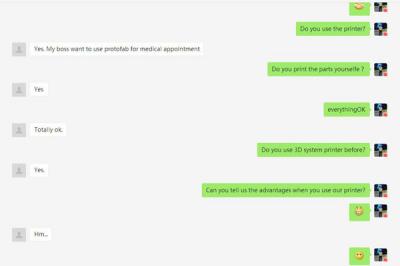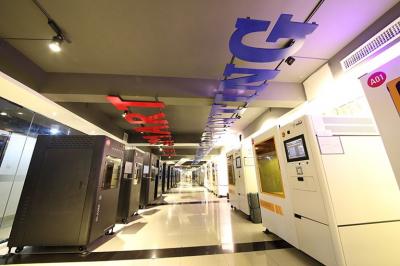
Create Time: 01/08/2019

In 3D printing choosing the right materials can be a complicated and sometimes confusing process. There are so many different properties to consider and complex terminology to deal with. There is no magic material that performs well in all areas, strength in one area will generally lead to weakness in another areas, so it's important to be aware of the relative pros and cons of each characteristic. This article will act as a guide to the process of selecting the right material and give an in-depth look into the specific materials that ProtoFab offers.
First, let's discuss some of the main properties that you need to consider in SLA 3D printing.
The concept of strength and robustness are quite broad and cover a range of different properties. One of the best measures of how robust a material will be is tensile strength. This is a measure of how much force is necessary to stretch a material until it breaks. Related to this is tensile modulus (Young's modulus), which is a measure of how much force is required to deform a material (in other words its stiffness).

In the automotive and aeronautical industries, generally it is critical that materials do not deform at all and will not break or snap under pressure, so people usually want these values to be high. Another aspect of strength is impact strength, which is a measure of how a material stands up to being struck or dropped. Often stiff materials with a high tensile modulus perform poorly in this regard as they do not absorb force very well, so what exactly makes a part "robust" is complex and multifaceted.
Flexibility and brittleness are closely related to strength and are one of the most central properties of any material. tensile strength isn't the only way of assessing whether a material is robust or not. Flexural modulus, flexural strength and elongation at break or all good indicators of how flexible or brittle are part will be. Flexural strength and flexural modulus are the same as tensile strength and tensile modulus except they are a measure of the force needed to bend a part rather than pull it apart. Elongation at break is the percentage that a part can be extended before it comes apart. Very flexible materials can be extended by more than 25% without break, while particularly brittle parts may snap after being extended only by 5%.

Parts which are extremely rigid will have a tendency to snap suddenly, while parts with some degree of flexibility may be able to withstand much higher forces before finally breaking. However, in many contexts rigidity is crucial, so there is always going to be some degree of trade-off between these related properties. For snap-fit assemblies brittleness is the characteristic that most needs to be avoided so flexibility is a must, even if that means sacrificing ultimate strength by some other measures.

Heat resistance is a property which can be critical in some applications but is also sometimes irrelevant, so materials should be chosen accordingly. Heat resistance tends to come at the cost of brittleness so if thermal performance isn’t required it’s often best to avoid materials specializing in this. With the right kind of post-curing we have materials that will hold their shape even at well over 200 degrees Celsius, while our flexible materials will start to deform at around 30 degrees, so the disparity in performance in this regard is significant.

SLA resins generally only come in pure white, off-white or clear. At ProtoFab we refer to this off-white color as ivory. Parts can be painted in post-processing so often the color of the material is not important at all, but sometimes clients will want to minimize post-processing or have specific reasons to avoid paint (for example in dental applications). In such cases pure white is sometimes preferred to ivory. Transparent resins are more difficult to produce and some mechanical properties will have to sacrificed to achieve this effect. However, our Clear series holds up pretty well against our other opaque materials in terms of strength and are suitable for most applications, with the exception of snap fit assemblies.

ProtoFab currently offers 10 different materials in 5 different families. Let's take at look at each in turn and quickly summarize their main strengths and weaknesses.
ABS is a mainstay of injection molding and prototyping in general, and it can be closely recreated as a printable resin for SLA. Our ABS-like Formula W and Formula L1 are good all-round performers that are suitable for a very wide range of applications. Compared to our other materials they don't excel in any particular property but neither do they have any major drawbacks. Both Formula W and Formula L1 are excellent choices for general purpose models and for automotive parts.

Sometimes parts need to be able to withstand a variety of thermal conditions, and that's what our heat resistant series is formulated to do. As mentioned earlier, heat-resistance can lead to brittleness, so we offer 3 different materials to try to meet the widest range of scenarios possible. All three of these materials are great for wind-tunnel testing.

For some specialist applications our regular ABS-like resins may not be strong enough, and for such cases we offer the Tough and Durable series. Tensile strength is similar to our ABS-like series, but the Tough and Durable series has much better performance in elongation at break and impact strength.

The primary property of our Clear series is that the material is transparent, but these resins also hold up well in their other mechanical properties. There are two materials in the Clear series, each offering different specializations and applications.

Finally, we have our polypropylene-like series, which is formulated to give flexibility.

Flewa W
Below you can download our material selection guide to review the summary of the properties for each of the materials we offer.





